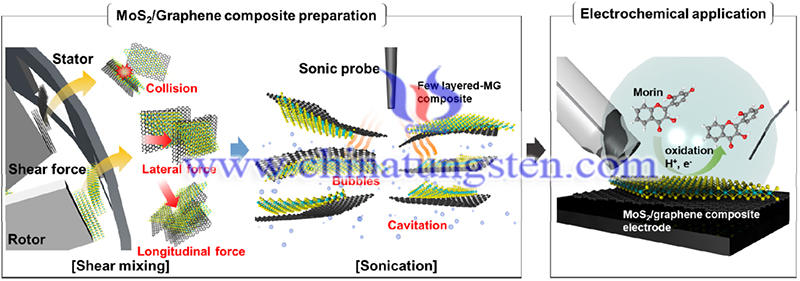Using Graphene and MoS2, Researchers Design Miniature Spectrometers
- Details
- Category: Tungsten's News
- Published on Saturday, 03 December 2022 19:14
An international research team, including researchers from Aalto University, Shanghai Jiao Tong University, Zhejiang University, Sichuan University, Oregon State University, Yonsei University, and the University of Cambridge, designed miniature spectrometers consisting of a 'sandwich' of different components, including graphene, molybdenum disulfide (MoS2), and tungsten diselenide (WSe2).
Thanks to computational programs and artificial intelligence, the spectrometer reportedly broke all current resolution records and did so in a much smaller package. The new miniaturized device can be used in a wide range of fields, from checking the quality of food to analyzing starlight or detecting faint clues of life in outer space.
Traditional spectrometers typically rely on bulky components to filter and disperse light. Modern methods have simplified these components to reduce size, but are still limited by resolution and bandwidth. In addition, traditional spectrometers are heavy and take up a lot of space, which limits their use in portable and mobile devices.

(Credit: Chang-Seuk Lee and Tae Hyun Kim/ACS Appl. Nano Mater)
To solve these problems and reduce the size of the system, the researchers combined layered materials with artificial intelligence algorithms. The result is an all-in-one spectrometer several thousand times smaller than current commercial systems. At the same time, its performance is comparable to that of benchtop systems. In other words, these new spectrometers will provide a portable alternative to discovering otherwise unseen information without even having to go into the lab.
"We have eliminated the need for detector arrays, dispersive elements and filters." Dr. Hoon Hahn Yoon of Aalto University in Finland, first author of the paper, said, "This is an all-in-one compact device that could revolutionize the field. This on-chip spectrometer technology promises to provide high performance and new utility throughout science and industry."
The different combinations of material compositions (among them graphene, MoS2 and other materials, as mentioned earlier) allow the detection of light beyond the visible spectrum and as far as the near infrared region. This means that the spectrometer detects more than just color, enabling applications such as chemical analysis and night vision.
The new devices can be incorporated into instruments such as drones, cell phones and lab-on-a-chip platforms that can perform multiple experiments in a single integrated circuit. The latter also offers opportunities for the healthcare sector. In this field, spectrometers and light detectors are already key components of imaging and diagnostic systems - new miniaturized devices could enable simultaneous visualization and detection of 'chemical fingerprints', leading to possibilities in biomedicine.

(Credit: Chang-Seuk Lee and Tae Hyun Kim/ACS Appl. Nano Mater)
"Our microspectrometer provides high spatial and spectral resolution at the micron and nanoscale, which is particularly exciting for responsive bioimplants and innovative imaging techniques," said co-author Professor Tawfique Hasan of the Cambridge Graphene Centre.
The miniature spectrometers consist of graphene and MoS2 hold great potential for scalability and integration due to compatibility with well-established industrial processes. It could open up the future for the next generation of smartphone cameras that will evolve into hyperspectral cameras in a way that traditional color cameras cannot.
Article source: https://www.graphene-info.com/researchers-design-impressive-all-one-miniature-spectrometers-using-graphene
| Molybdenum Supplier: Chinatungsten Online www.molybdenum.com.cn | Tel.: 86 592 5129696; Fax: 86 592 5129797;Email:sales@chinatungsten.com |
| Tungsten News & Prices, 3G Version: http://3g.chinatungsten.com | Molybdenum News & Molybdenum Price: http://news.molybdenum.com.cn |



 sales@chinatungsten.com
sales@chinatungsten.com